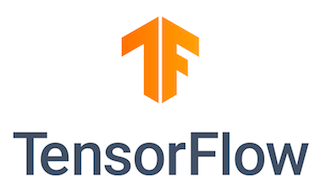How To Install TensorFlow on Ubuntu 22.04 LTS

In this tutorial, we will show you how to install TensorFlow on Ubuntu 22.04 LTS. For those of you who didn’t know, TensorFlow is a wildly popular open-source framework used for numerical computation that makes building machine learning algorithms easy and convenient. It includes comprehensive tools, libraries, and a community, ensuring a robust environment for researchers to develop machine learning and AI-related applications with ease.
This article assumes you have at least basic knowledge of Linux, know how to use the shell, and most importantly, you host your site on your own VPS. The installation is quite simple and assumes you are running in the root account, if not you may need to add ‘sudo‘ to the commands to get root privileges. I will show you the step-by-step installation of the TensorFlow open-source framework on Ubuntu 22.04 (Jammy Jellyfish). You can follow the same instructions for Ubuntu 22.04 and any other Debian-based distribution like Linux Mint, Elementary OS, Pop!_OS, and more as well.
Prerequisites
- A server running one of the following operating systems: Ubuntu 22.04, 20.04, and any other Debian-based distribution like Linux Mint.
- It’s recommended that you use a fresh OS install to prevent any potential issues.
- SSH access to the server (or just open Terminal if you’re on a desktop).
- A
non-root sudo useror access to theroot user. We recommend acting as anon-root sudo user, however, as you can harm your system if you’re not careful when acting as the root.
Install TensorFlow on Ubuntu 22.04 LTS Jammy Jellyfish
Step 1. First, make sure that all your system packages are up-to-date by running the following apt commands in the terminal.
sudo apt update sudo apt upgrade sudo apt install build-essential curl file git
Step 2. Installing Python and Required Dependencies.
We need to install Python and other required Python dependencies to your server:
sudo apt install python3-pip sudo apt install python3-venv python3-dev
For additional resources on installing Python, read the post below:
Step 3. Create TensorFlow Virtual Environment.
Now we create a Tensor environment folder in your home directory using the following command below:
mkdir tensor_envrionment cd tensor_envrionment python3 -m venv tensor_env
Next, activate the virtual environment with the following command:
source tensor_env/bin/activate
Finally, install the latest version of TensorFlow using the following command:
pip install --upgrade pip sudo python3 -m pip install tensorflow
Once the installation is completed, verify the TensorFlow installation using the following command below:
python3 -c 'import tensorflow as tf; print("The version of TensorFlow is", tf.__version__)'
You can deactivate the virtual environment using the command:
deactivate
Congratulations! You have successfully installed TensorFlow. Thanks for using this tutorial for installing the TensorFlow open-source framework on Ubuntu 22.04 LTS Jammy Jellyfish system. For additional help or useful information, we recommend you check the official TensorFlow website.